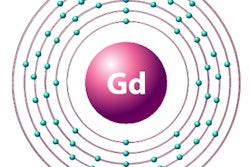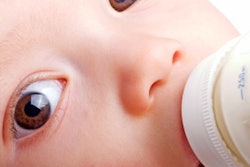
Researchers from the Mayo Clinic in Rochester, MN, have confirmed the presence of gadolinium deposits in postmortem brain tissue of pediatric patients with normal renal function who underwent contrast-enhanced MRI scans, according to a study published online May 22 in JAMA Pediatrics.
The findings mirror other studies that have found gadolinium in the brains of adult patients with normal kidney function years after they received gadolinium-based contrast agents (GBCAs). The detection in pediatric patients may be of greater concern, however, because their brains are still developing and they are more susceptible to the neurotoxic effects of heavy metal exposure.
"Although our data are limited by small sample size, the deposition appears to follow a dose-dependent trend with preferential accumulation in the dentate and deep gray nuclei, similar to what has been described in the adult population," wrote lead author Jennifer McDonald, PhD, and colleagues (JAMA Pediatr, May 22, 2017).
Approximately 40% of the 3 million pediatric MRI scans in the U.S. every year use gadolinium contrast, the authors wrote. Despite this prevalence, previous studies on the potential effects of single or repeated GBCA administration have focused on adults.
That may be changing. Earlier this year, German researchers found that the use of a macrocyclic GBCA for MRI scans did not increase signal intensity in the dentate nucleus in pediatric patients. The results were also consistent with a previous study of adult patients.
In the current single-center, retrospective, case-control study, McDonald and colleagues analyzed postmortem brain tissue from three pediatric patients who died between 2000 and 2015. The subjects had undergone at least four MRI scans with gadodiamide (Omniscan, GE Healthcare) during their lifetime. Their samples were compared with those from a control group of three pediatric patients who had never received gadolinium-enhanced MRI.
The researchers detected gadolinium in all four neuroanatomic regions -- the dentate nucleus, pons, globus pallidus, and thalamus -- in the three subjects who had received contrast. The highest concentrations of gadolinium were in the dentate nucleus or pons. No gadolinium was found in the postmortem brain tissue of the three control subjects.
Given that pediatric brains are more susceptible to heavy metal exposure, additional research is essential, along with "more judicious use of gadolinium contrast in the pediatric population," the group concluded.


.fFmgij6Hin.png?auto=compress%2Cformat&fit=crop&h=100&q=70&w=100)





.fFmgij6Hin.png?auto=compress%2Cformat&fit=crop&h=167&q=70&w=250)











